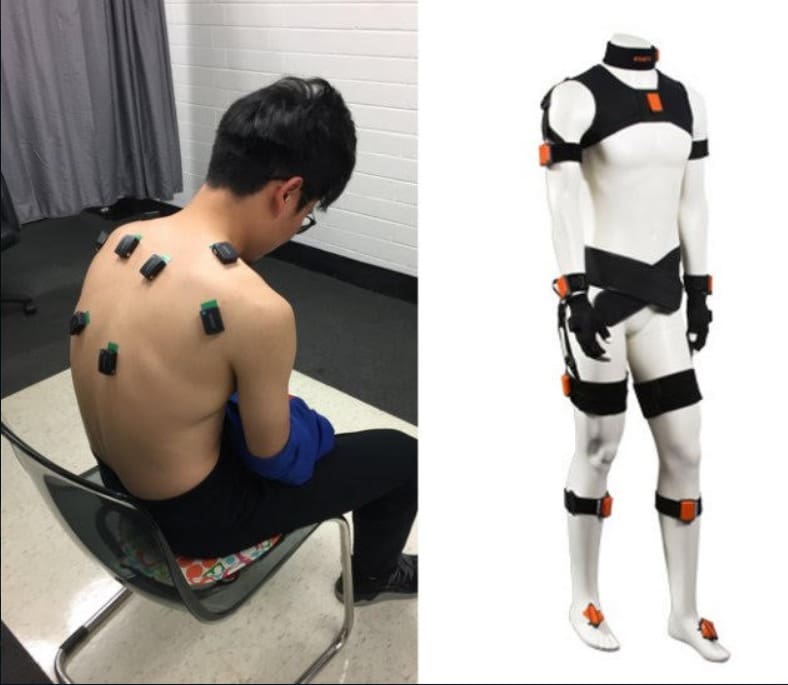
Sensors at the ready, now where are the sheep? Image – AWI.
WEARABLE robotics could be a solution to easing the back-breaking labour of shearing Australia’s sheep flock.
Although Australian Wool Innovation is funding studies into the robotic shearing of sheep, it is also pioneering research to help shearers minimise back injuries through the use of wearable robotics.
Attracting and retaining shearers is one of the biggest challenges facing wool growers and the industry. A major factor is that shearing can be a ‘back-breaking’ profession, with injuries to shearers being six times the all-industry average in Australia. Lower back injuries are the biggest issue due to their long rehabilitation time and associated lost productivity.
A project funded by AWI aims to understand exactly how these injuries arise and then research potential wearable robotic solutions for shearers to reduce the risk of injury while still allowing the high degree of maneuverability required for shearing.
AWI’s general manager research Dr Jane Litttlejohn said AWI wanted shearing to be an attractive job, because it is important.
“We want shearing to be easier.”
She said half of the injuries in shearing are due to physically handling the sheep. These include muscle tendon and joint strain, but most are strains on the back.
“And that is where we can potentially make the best progress.
“One early Insight is muscle fatigue in the lumbar area is a precursor to problems.”
Sensors could tell shearers when to rest
AWI and the University of Melbourne are working together on the project to reduce on-the-job shearing injuries.
The research uses motion detectors and muscle sensors to track sheep shearers in an effort to minimise on the-job-injuries. Data from sensors attached to shearers will be used to model worker movement throughout the workday and test new ways of doing the job without risking injury.
These sensors are placed directly on the skin of the lower back and upper thighs, while motion detectors are placed around the joints to track a worker’s posture and movement.
The initial objective of the project is for the researchers to accurately identify the mechanisms of lower back musculoskeletal injuries in shearers. With this knowledge, researchers aim to develop a practical and cost-effective prototype tool to be worn by shearers to alert them when they are becoming vulnerable to potential injuries. This sensing unit would propose optimal resting cycles and could potentially be connected to a mobile phone application.
By the end of this 12-month project, researchers will also develop a conceptual design for a more active solution for fatigue management and injury prevention, such as an exoskeleton that the shearer can wear.
The measurement platform will combine two separate sets of wireless sensors (pictured) to measure muscle activity and shearers’ body motion and posture simultaneously, allowing the study to take place inside shearing sheds instead of inside a lab.
A measurement system will be developed by University of Melbourne researchers for shearers to wear during the research. This system will monitor the shearers’ muscle activities and posture to estimate the potential injury.
The shearers’ measurements will be collected on a specially designed portable measurement platform that will be installed in a real shearing shed where it is possible for the shearers to shear more than 200 sheep per day. Researchers will therefore be able to study the shearers’ biomechanics in authentic conditions.
To understand the dynamics of lower back muscles under different shearing environments, factors that will be considered include whether or not each shearer has had a prior injury, the different skill level of each shearer (highly experienced or new to shearing), the age of each shearer and whether or not a back harness is used.
Early results expected in April
Ms Littlejohn said the project is still in the data-collecting stage.
“We are looking to potentially expand the study but at this stage it is eight shearers in Victoria and New South Wales.
“They are broken down into categories including learner shearer, experienced shearer, injured and not injured,” she said.
Ms Littlejohn said the shearing sling used by shearers provides some support, but could be improved.
Catch and drag from the pen is another stressor for injury and the research is considering whether better shed design reduce that injury risk.
“There is a lot to think about where to intervene.
“Options being considered are sensors to tell shearers to have a break, different timing of breaks and how they warm up cool down and stretch,” Ms Littlejohn said.
“Other options are Improving shed design, changing the stance a bit and further develop of an exo-skeleton to support the shearer’s back.
“Some early results are expected in April. ”

HAVE YOUR SAY